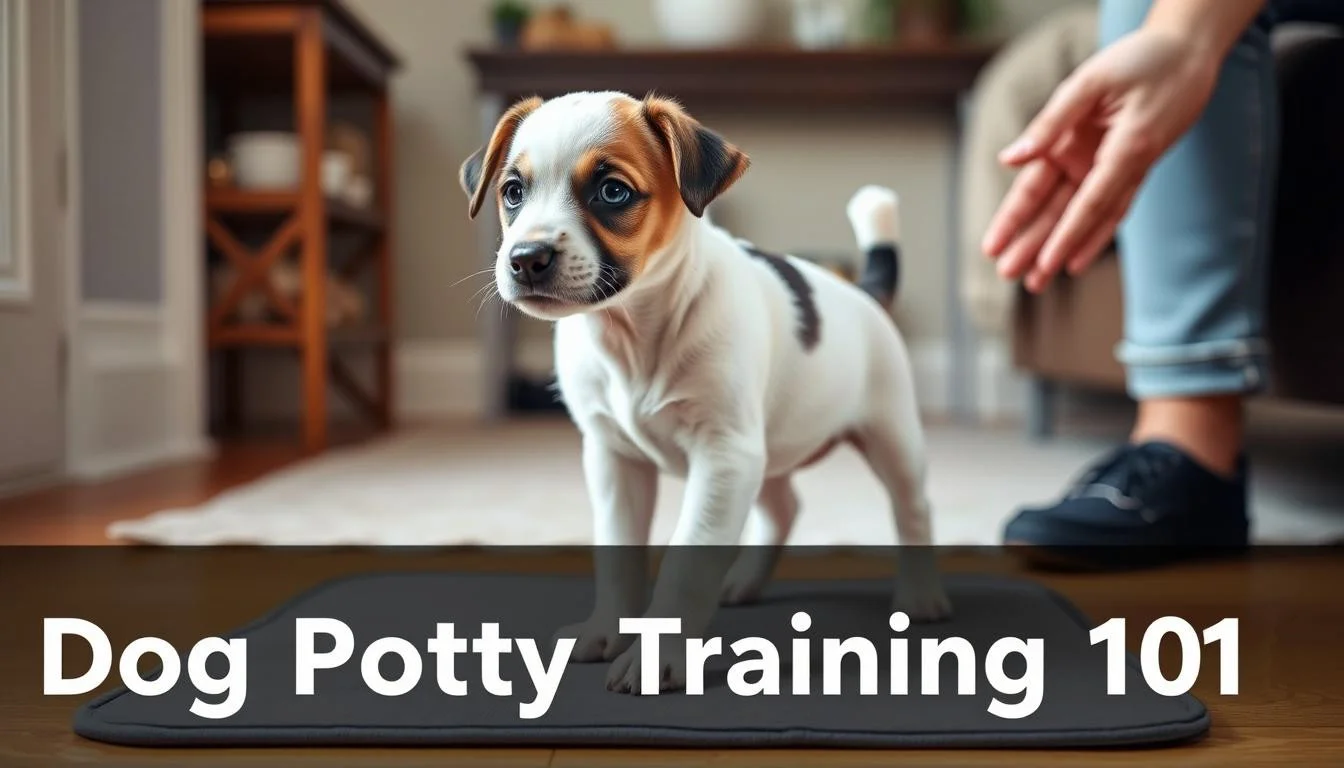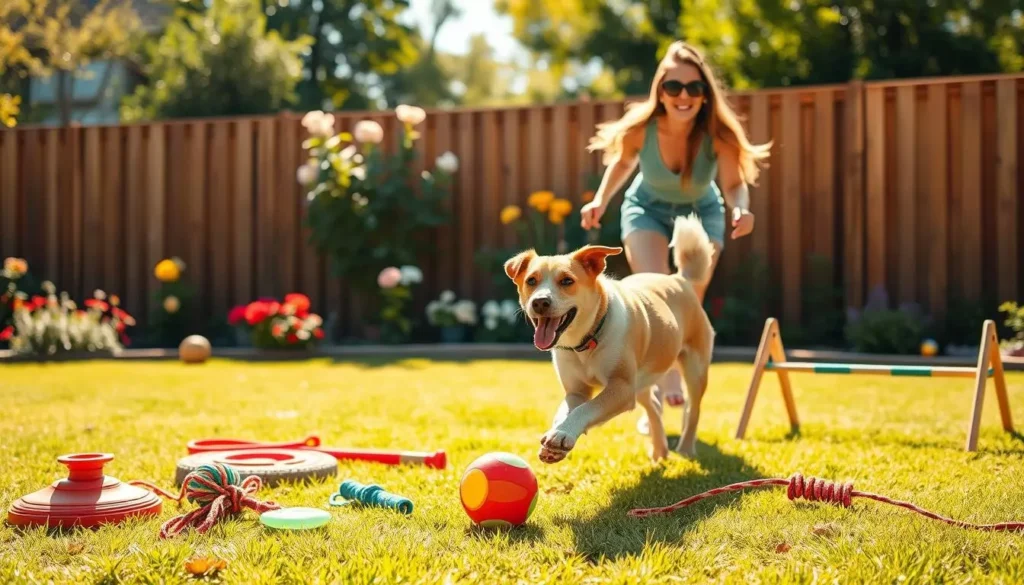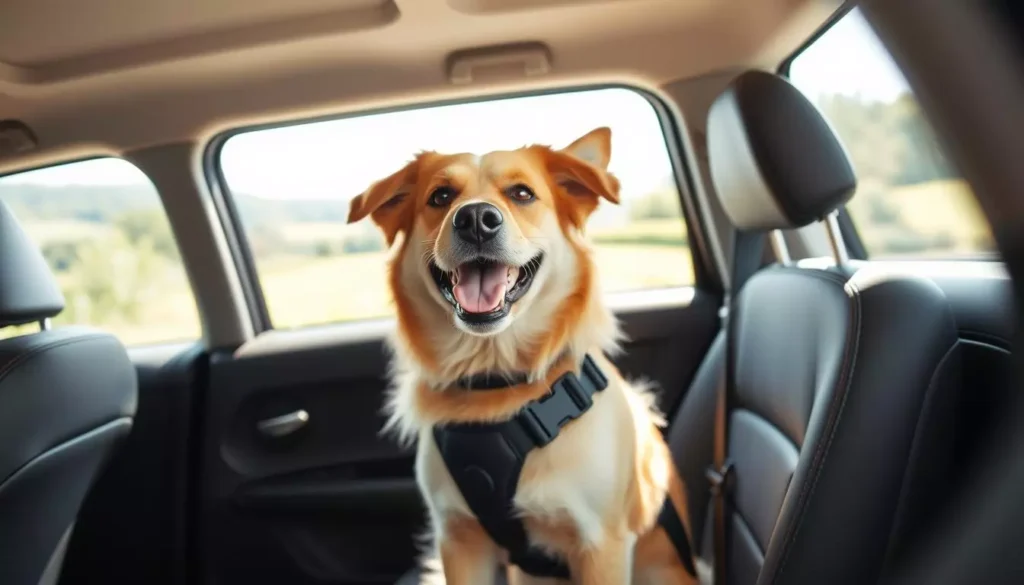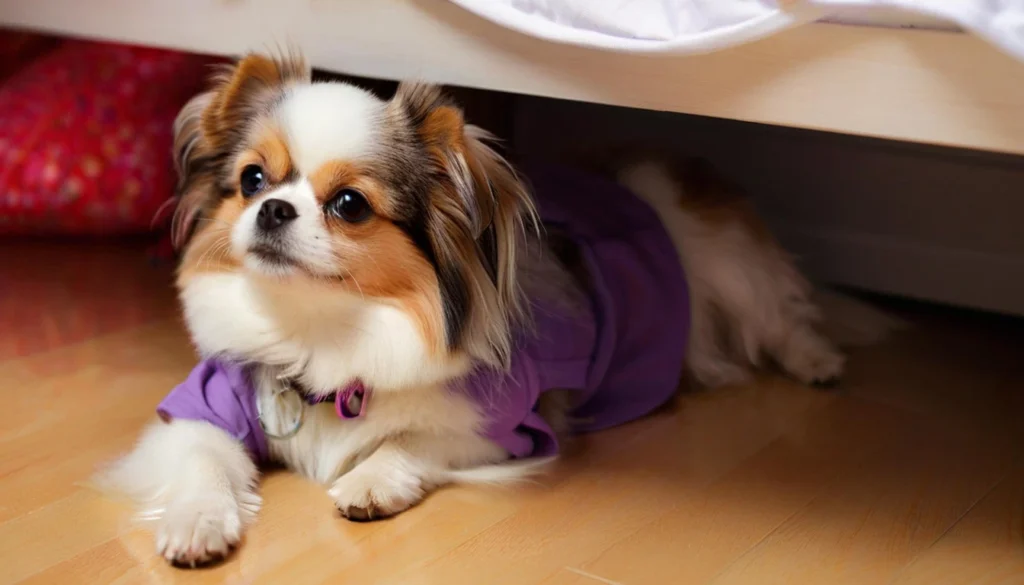I remember the first week with my Labrador: joy, sleepless nights, and worry. Every puddle seemed like a failure, but every successful trip outside was a victory. With the right dog potty training tips, the stress goes away, and the bond grows stronger.
Learning the basics of potty training is key to a happy home and a well-behaved dog. Before getting my puppy, I studied crate training, schedules, and positive reinforcement. Having a plan, like a right-sized crate and timed trips, helped a lot.
In this guide, I'll share practical steps for puppy potty training that worked for us and many others. From crate training to using puppy pads and managing diet and timing, these methods are effective. Remember, patience, consistency, and a few setbacks are part of the journey. But with a plan, you'll see progress fast.
Key Takeaways
- Start with a plan: potty training basics reduce confusion and speed results.
- Use crate training and a consistent schedule to prevent most accidents.
- Watch for puppy signals and time trips after sleep, play, and meals.
- Puppy potty training and house training a dog rely on patience and rewards.
- Enzymatic cleaners and calm responses matter when accidents happen.
Why potty training matters for your puppy and home
I focus on practical steps to help a puppy succeed. Early potty training builds a routine and strengthens our bond. It also prevents bad habits that are hard to fix later.
How early housetraining shapes long-term behavior
Puppies learn quickly. If I give them too much freedom too soon, they pick up bad habits. I use crate training and rewards to teach them good habits early on.
Health, hygiene, and household benefits
Clear routines keep a puppy healthy. Regular breaks after eating and playing prevent infections and skin issues. A clean home is a result of following a potty training plan.
When to start: developmental windows and age guidelines
I plan potty training based on the puppy's age. Young puppies need to go more often than older ones. Knowing this helps me set realistic goals and choose the right steps for each puppy.
| Age Range | Typical Hold Time | Management Focus |
|---|---|---|
| Under 8 weeks | 30–60 minutes | Close supervision, immediate trips after activity |
| 8–10 weeks | 1–2 hours | Short crate sessions, start consistent potty spot |
| 10–12 weeks | 2–3 hours | Longer supervised freedom, introduce timers |
| 12+ weeks | 3–4 hours, overnight breaks | Gradual increase in freedom, reinforce cues |
dog potty training
I've helped many owners with the early stages of housebreaking. Setting clear goals and following routines is key. I share practical steps for both young pups and adult dogs.
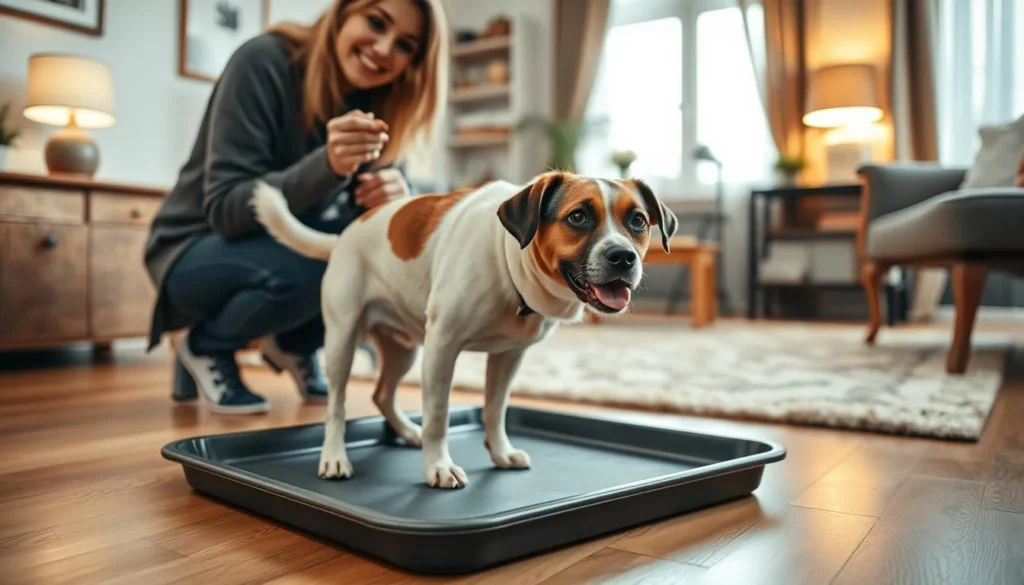
Defining success: zero-accident mindset and realistic timelines
I strive for a zero-accident potty training approach. It means constant supervision and rewards. This mindset helps me create a potty training plan for each dog.
Setting realistic goals is important. Some puppies learn quickly, while others take longer. A six-month-old puppy can hold for about six hours. Toy breeds need to go out more often.
Using crates, schedules, and positive reinforcement helps dogs learn faster.
Common myths debunked about potty learning
Accidents don't mean a dog is misbehaving. Dogs follow safety, routine, and rewards.
It's crucial not to give dogs too much freedom too soon. Keeping them in confined spaces helps. Praise and treats for good behavior create a strong habit.
How breed, age, and prior history affect progress
I look at breed differences in potty training early. This helps me create a specific plan. Small breeds might need indoor options like pads or potty boxes.
Rescue dogs might have learned to soil in crates or kennels. They need a careful reset, medical checks, and patience.
Tracking accidents and adjusting the schedule is key. This approach makes training predictable and prevents setbacks.
Choosing the right method: crate training, pads, or indoor options
I explain practical choices for dog potty training so you can pick what fits your home and schedule. Each method has clear strengths and limits. I cover crate training basics, indoor systems like a dog potty training box and dog potty training mat, plus puppy pads pros and cons and how to plan a smooth transition from pads to outdoors.
Why crates work and sizing tips
Crate training taps into a dog's den instinct. Dogs prefer a clean sleeping area, so a properly sized crate reduces accidents. I recommend a crate large enough for the puppy to stand, lie down, and turn, but not so large that one corner becomes a bathroom.
Use a partition or divider as the puppy grows. If the puppy soils the crate, reassess size, feeding and potty schedule, and rule out medical issues with your veterinarian.
Puppy pads, boxes, and indoor potty systems — pros and cons
Puppy pads can be lifesavers when outdoor access is limited by long workdays or cold weather. The main trade-off is that pads teach indoor elimination is acceptable. That makes later outdoor training more complex.
A dog potty training box works well in small apartments and for male dogs. A dog potty training mat with grass-like fibers can feel more natural to some dogs. Indoor systems let you avoid late-night walks, but they usually require an exit strategy if you want fully outdoor pottying later.
Practical steps to move from indoor to outside
The transition from pads to outdoors takes planning and patience. I start by designating a specific outdoor spot and using a short leash to guide the puppy there each time. Add a cue word and reward immediately after the puppy finishes.
If you use pads, move the pad gradually toward the door over several days, then step it outside. Swapping a puppy pad surface for a grass-like dog potty training mat can ease the change. Clean indoor accidents with an enzymatic cleaner to remove odors that invite repeats.
Quick checklist
- Match crate size to current body size and add a partition for growth.
- Limit pad use when possible to avoid mixed messages about indoor toileting.
- Pick an indoor system that you can map to a single outdoor spot for easy transition.
- Use a leash, cue, and consistent rewards during the transition from pads to outdoors.
Creating a practical potty training schedule
I teach puppies where and when to go with clear steps. A steady schedule cuts down on accidents and speeds up learning. I tailor routines to age, activity, and feeding times, making it fit real life.
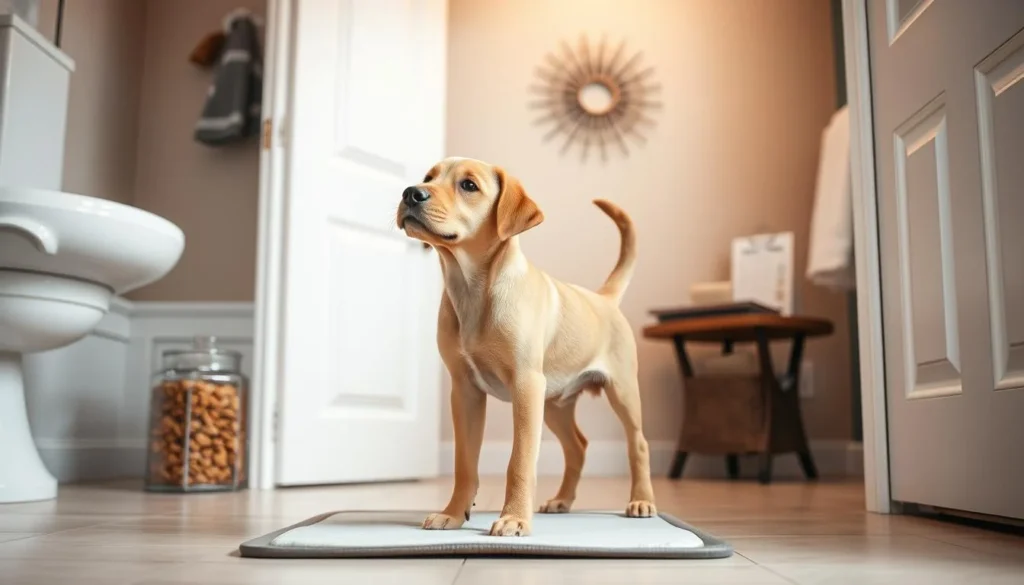
Age-based timing: how often to take your puppy out
I use a simple rule: hours equal puppy age in months for bladder control. For young pups, I take them out often. Morning and night trips are always a must.
After play, naps, eating, or drinking, I schedule trips. For timing, I follow these intervals: under 8 weeks, every 45 minutes; 8–10 weeks, every 60 minutes; 10–12 weeks, every 90 minutes; and 12+ weeks, every 120 minutes. Night trips are every three to four hours until the pup sleeps through.
Daily routine examples for work-from-home and in-person workers
Working from home, I plan short breaks for potty cues. A day includes morning, mid-morning, lunch, mid-afternoon, and evening trips. I use the 10-10-10 rule: ten minutes in the yard, ten feet of potty area, ten minutes of supervision.
Working outside the home, I arrange trusted help. Dog walkers or family must follow the same schedule. This keeps the puppy on track and avoids over- or under-stretching their bladder.
Using timers and logs to track progress and avoid accidents
I recommend a strict potty training timer for the first two weeks. Reset it each time the puppy potties. This creates a predictable rhythm and reinforces the habit.
I keep two logs: one for scheduled trips and one for accidents. The potty pattern tracker records times, successes, and mishaps. Reviewing entries helps me adjust the schedule to match the puppy’s progress.
| Age | Recommended Interval | Key Trips Each Day | Practical Tip |
|---|---|---|---|
| <8 weeks | Every 45 minutes | Wake, after play, after naps, after eating, bedtime | Use a potty training timer and keep outings short |
| 8–10 weeks | Every 60 minutes | Morning, mid-morning, lunch, afternoon, evening, night | Follow the 10-10-10 rule for focused trips |
| 10–12 weeks | Every 90 minutes | Fewer mid-day trips, still frequent after meals and naps | Start logging successes in a potty pattern tracker |
| 12+ weeks | Every 120 minutes | Morning, mid-day, late afternoon, evening, extended night | Gradually expand freedom based on reliable logs |
| Overnight | Every 3–4 hours | Before bed and middle-of-night checks as needed | Reduce night trips as bladder control improves |
Signals, prevention, and active supervision strategies
I take steps to prevent accidents before they happen. Watching closely, acting fast, and following routines makes training easier for everyone. It's less stressful for me and the puppy.
Recognizing puppy signals and common pre-potty behaviors
I look for signs like whining, circling, and sniffing. I also watch for sudden stops in play and door scratching. When I see these signs, I act quickly.
If a puppy squats inside, I pick them up and take them outside. If they go outside, I praise them calmly. This helps them connect the action with a reward.
Management best practices to prevent mistakes
Preventing mistakes starts with management. I don't give too much freedom too soon. I control water intake and feed small, regular meals to help with potty training.
When I'm busy, I use a crate, pen, or puppy pads. This keeps the home safe and helps the puppy stay on track.
I always supervise closely for at least ten minutes after a mistake. This short break helps the puppy learn without getting confused.
Leash supervision, confinement, and the “no free roam” rule
Active supervision means I keep my eyes on the puppy. If I need to move, I use a leash to keep them close. This rule helps prevent mistakes and speeds up learning.
If I'm away for a long time, I hire a dog walker or ask someone to let the puppy out. Crate time is for naps, not freedom. This balance keeps the training on track.
Positive reinforcement and reward systems that work
I guide readers on how to teach a puppy to go potty. Positive reinforcement is key to success, not punishment. I use clear cues, quick rewards, and consistent timing to help my pup understand the connection.
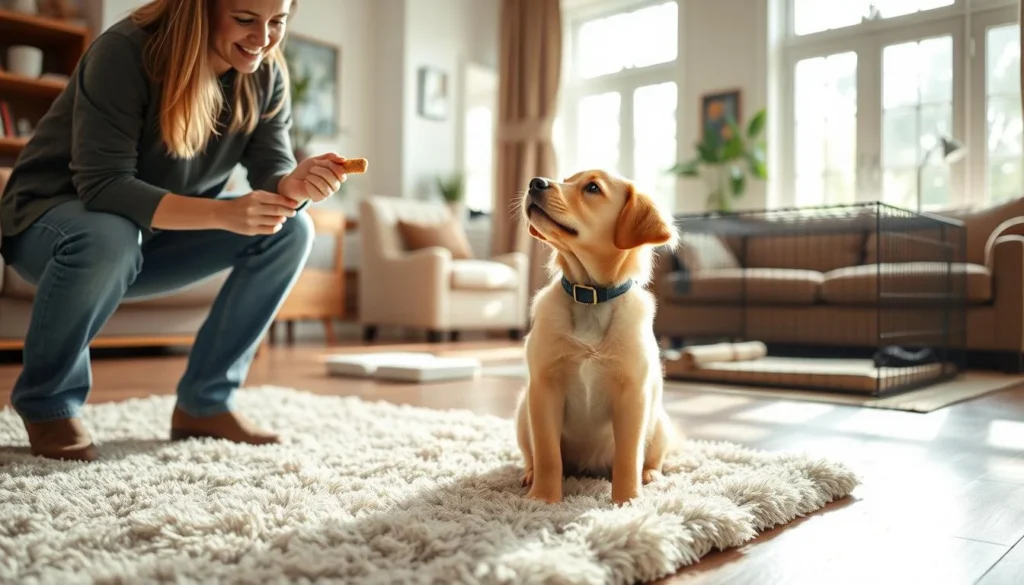
Timing praise and treats for immediate learning
I give praise and treats the moment a puppy goes potty in the right spot. Timing is everything. I use a happy voice and give a small treat like cheese or kibble. This helps my pup connect pottying with rewards.
High-value rewards and using the environment as a reward
At first, I use treats like cooked chicken. These rewards should feel special to motivate my pup. The yard becomes a reward too. After a successful potty break, my pup gets to play or explore freely for a bit.
How to handle accidents calmly and clean effectively with enzymatic cleaners
I never yell at my pup for accidents. Most are due to missed cues or schedule issues. I clean up calmly and use an enzymatic cleaner to remove odors. This prevents my pup from going back to the same spot.
I follow these tips in short, frequent sessions. If my pup misses a potty break, I crate them briefly and try again soon. Being consistent with rewards and praise keeps things positive and stress-free.
Special tools and training aids: bells, sprays, mats, and videos
I use special tools to help with dog potty training and cut down on accidents. These small aids help connect instinct with routine. It's important to pick tools that fit your home, your dog's size, and your plans for outdoor training.
How to use a dog potty training bell to teach communication
I hang a dog potty training bell by the door, at puppy height. When I take my dog out, I guide a paw to touch the bell. Then, I open the door and praise them right away. This makes the bell a reliable signal.
When to use dog potty training spray to attract to a spot
I use dog potty training spray on pads or grass trays when my puppy needs help finding a spot. I follow the directions on the spray and use it with supervision and treats. The scent helps my puppy learn where to go early on.
Choosing a dog potty training mat or box for small breeds and apartments
I choose a dog potty training mat or box that matches my dog's size. For apartments, synthetic grass pads, tray systems, and low-sided boxes work well. To move training outdoors, I start by placing the mat near the door and then outside. I keep my dog on a leash and use a consistent spot.
Recommended dog potty training video resources for visual learners
I watch dog potty training videos from certified trainers for step-by-step guides. Look for videos that cover crate setup, the 10-10-10 routine, and bell training. Paid courses like Puppy Academy or Level Up Guides offer more in-depth support.
Troubleshooting setbacks and regression
It's frustrating when a dog's training goes back to square one. This can happen with small pups, adopted dogs, or those who get too much freedom. I look for patterns and causes before making any changes.
Common causes and immediate responses
Setbacks often come from inconsistent schedules or too much freedom. Dogs with a rescue history may face uneven progress. I focus on strict management, like crate sizing and leash supervision.
I use the 10-10-10 routine to help. This means 10 minutes of focus, 10 minutes of leash control, and 10-minute checks. I also keep a log to track trends and adjust schedules.
Medical or behavioral: when to get professional help
Accidents can sometimes mean health issues, not just training problems. Issues like urinary tract infections or endocrine problems can cause accidents. If a dog seems impossible to housetrain, a vet visit is a good idea.
If the vet says it's not a health issue, I look for a certified trainer or a veterinary behaviorist. They can help when usual methods don't work.
How I reset the plan after repeated accidents
Resetting means going back to the basics. I reduce freedom and increase potty trips. I also check crate size and feeding times.
Enzymatic cleaners help remove odors so the dog won't go back to the same spot. If accidents keep happening, I create a conservative schedule and log successes. If no progress, I might consult a trainer or vet for further testing.
| Issue | First Response | Follow-up |
|---|---|---|
| Inconsistent schedule | Return to timed feeds and strict trip times | Log patterns for 7 days and adjust intervals |
| Too much freedom | Reintroduce confinement and leash supervision | Gradually increase free time after 2 weeks without accidents |
| Repeated accidents in same spot | Thorough enzymatic cleaning and limit access | Reinforce correct spots with high-value rewards |
| Sudden regression in a trained dog | Check for medical signs and call vet | Follow veterinary care or consult a behaviorist |
| Rescue dog with unknown history | Assume regression risk and start Step Zero management | Slowly build trust and consistency; track progress |
Advanced tips for outdoor potty training and long-term reliability
I'll share strategies to make your dog's potty training last. These tips focus on being consistent, making sure your dog is comfortable, and giving them freedom in steps. This way, your dog will learn where and when to go with confidence.
Teaching a specific yard spot
I take my puppy on a short leash to the same spot every time. I use a single cue word and wait until they finish. Right after, I give them a treat and praise them calmly.
I keep doing this at every outing. This makes my puppy learn to go to the same spot every time. Once they're good, I slowly introduce new spots to help them learn to go anywhere.
Potty training in bad weather
When it rains or snows, I make the trips quick and dull. If it's really bad, I use an indoor pad or a covered area. These options help keep the training going without losing progress.
When carrying a small dog outside, I keep the walk short and focused. Quick treats and calm praise help them stay motivated in bad weather. I avoid long walks that might distract them from their task.
Expanding unsupervised time
After a successful outing, I give them 30–60 minutes of freedom inside. One successful trip can earn them that first block of time.
I only increase unsupervised time after several days without accidents. I still use the crate and schedule trips until they're consistently clean. If accidents happen again, I cut back on freedom and go back to strict rules.
Conclusion
Dog potty training works when you're patient, set clear rules, and stick to them. Use the right crate size, a good schedule, and watch them closely to avoid accidents. Tools like timers and logs help make good habits last.
Positive rewards and calm handling of accidents make training easier. Clean up messes with special cleaners and don't scold. This keeps the training process calm and steady.
Remember, every dog is different, and it's okay if it takes time. Focus on managing their freedom and training them to go in one spot. This builds trust and makes your home happier.
To sum it up, a consistent routine, timely rewards, and prevention are key. Stay committed, track your progress, and you'll earn your dog's trust. Then, you can give them more freedom indoors and out.

